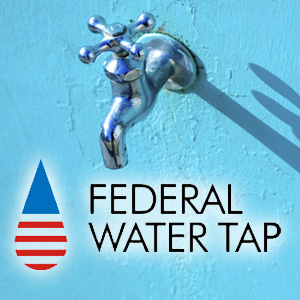The Stream, April 24: Military Action Threatens Somalia Drought Response
The Global Rundown
Potential military interventions against the al-Shabaab group in Somalia would be detrimental to drought and famine relief efforts, according to a United Nations representative. India plans to build more artificial glaciers to make up for the loss of ice in the Himalayas. Scientists surveying Antarctica found much more meltwater than they previously expected. Rivers in Colorado could get quicker relief from acid mine drainage through interim restoration projects. The U.S. military is assessing hundreds of bases to scan for water contamination. Nairobi, Kenya plans a sharp increase in boreholes to address water shortages.
“Increased belligerence from some international and national actors is not going to help us … if things deteriorate as a result of military effort, that will be man-made. We have argued very strongly that this is not the time for military action.” –Peter de Clercq, United Nations’ deputy special representative of the secretary-general in Somalia, warning that military interventions by the U.S. and Somali governments against al-Shabaab militants could harm humanitarian efforts to respond to a drought and potential famine in the country. (Guardian)
By The Numbers
14,195 liters per minute Estimated amount of acid mine drainage polluting the Animas River in Colorado, the site of the 2015 Gold King mine spill. The U.S. Environmental Protection Agency is proposing 40 early-response projects to stem the toxic flow from abandoned mines in the river’s watershed. The Denver Post
In context: Pennsylvania is encouraging the use of contaminated water flowing from hundreds of abandoned coal mines for hydraulic fracturing.
61 boreholes Number that Nairobi, Kenya plans to construct in the next year — a 77 percent increase from the current number of boreholes — as part of efforts to address chronic water shortages. Other initiatives include the installation of prepaid water meters and the collection of floodwaters. Daily Nation
400 U.S. military bases Number slated for water quality testing to evaluate whether they are contaminating nearby water sources with perfluorinated compounds from firefighting foam. Contamination has been found near more than two dozen bases so far. The Philadelphia Inquirer and Daily News
Science, Studies, And Reports
There is much more meltwater flowing across the surface of Antarctica than previously thought, putting the surrounding ice at risk, according to researchers at Columbia University. “This is not in the future — this is widespread now, and has been for decades,” said lead author Jonathan Kingslake. CBS News
On The Radar
Engineers in northern India plan to build 20 additional artificial glaciers, or “ice stupas”, in order to provide a steady flow of water to arid communities affected by the loss of glaciers in the Himalayas. The cone-shaped ice stupas can provide up to 5,000 liters of water per day as they melt. Guardian
In context: As the Himalayan glaciers disappear, ten major Asian river systems are threatened.
A news correspondent for Circle of Blue based out of Hawaii. She writes The Stream, Circle of Blue’s daily digest of international water news trends. Her interests include food security, ecology and the Great Lakes.
Contact Codi Kozacek





